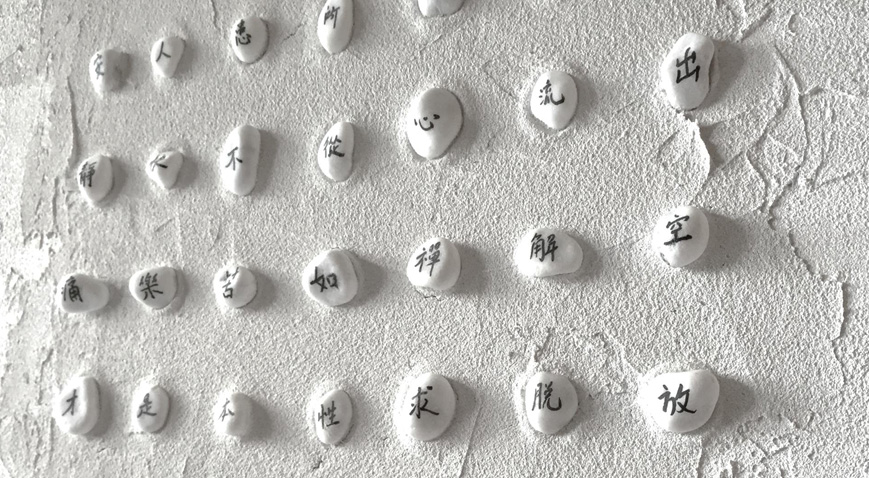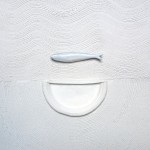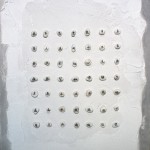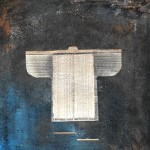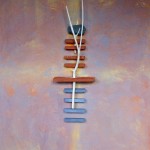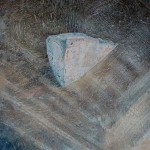There are 5 pieces of Wabi-sabi work, sharing the same texture of canvas foundation, which is made with a mixture of sand and acrylic. Using sand as a medium has a philosophical, “Wabi-sabi” dimension to it. The way that sand slips away from the slits between our fingers when you try to grasp a handful reminds us that nothing in life can actually be grasped, and held. Everything goes like the sand slipping out of your hands.
I have continued to develop new art forms for this Project, by exploring different materials and multi-media on canvas. This intrinsic interest in abstract painting, is intended to demonstrate the concepts of Space, Thought, Impression, History and Travel, as well as the philosophy of “Slow living” in my art.
In an attempt to elaborate on the concept of conceptual space which I call, “Mindscape”. It refers to the shifting state of mind imbued with the unknown, memory, impression, or perhaps merely the acknowledgement of a nothingness to illustrate my thoughts on slow living.
If I use the Impression of Kamo-gawa as an example. Without linear perspective, it is not a landscape painting, but a Mindscape where the night view of the famous Kamo-gawa river in Kyoto is captured as the background and a kimono in the centre to represent Japanese history, culture and traditions. More profoundly, it represents the Japanese attitude of slow living. Not only is the making and dressing of a traditional kimono a lengthy process that requires many delicate steps, the kimono is also designed in a way that slows down the wearer’s walking speed by confining the scope of each step.
The overall visual composition came from my Impression of the river based on my travelling experiences. The landmark of a classic city where Geisha [18] are around, the Kamo-gawa is a charming quaint river that requires the viewers to tune in its slow pace and long History, perhaps by wearing a kimono as well, in order to appreciate its unique beauty.
In this section of my research I also had some thoughts about how I might develop my ideas to experiment with multi-media such as stone, paper, and wood. I love to explore these media sourced directly from the nature as their style and tone are exactly of Wabi-Sabi.
I still wonder however whether it is a conceptually wise choice to apply them on 5 standardized canvases (60 x 80cm) or leave them as installations. As I became absorbed in the creating process that I might have overlooked some in-depth consideration on the actual results and effects of the work. I keep testing, trying, experimenting, modifying, trying again, on the canvas, deemed my comfort zone.
Besides, each of my eight pieces of work is accompanied with a short illustrative text. Although good art can stand alone and speak for itself, a minimal, reasonable amount of explanation might be necessary to facilitate viewers’, especially Western viewers’ understanding and appreciation for the Zen-inspired work that is highly allusive and in my presentation, influenced by the concept of Wabi-Sabi.
Speaking of direction in near future, I would love to keep on experimenting and experiencing with the aforementioned concepts, inspired by the artists I aspire to be like. I have preference for lyrical themes such as the philosophy of Slow Living because I would like the viewers to have a peaceful mind when sharing my thoughts.
I also prefer a temperate or meditative attitude towards making art, in very much the same way of Zen – going with the flow, letting go of whatever comes in life gracefully, with humility and originality. That is my fundamental state of mind while creating art; I am eager to develop my art in a simple way that associates with the philosophy of Zen. I know it is not an easy way to approach art as “What seems the easiest is actually the hardest”, as how an old Chinese proverb puts it (大巧若拙).
Sometimes, the most interesting results arrive when I least expect them, before I have even decided upon which form and media to use. Therefore, I keep reminding myself not to worry too much about the quality of the ultimate work or the techniques, whether they are sophisticated enough. After all, I would simply follow my heart with peace in mind whenever I am making art. I love to explore more possibilities in creating art based on the mindscapes collected from keen observation on subject matters in daily life that interest me, and transformed mental images into visual elements, from the obvious to the metaphorical, where some sorts of subjective, inexpressible emotions and thoughts are inspired.
All in all, Slow Living is a not only a lifestyle, but also an attitude and behavior; it is a core value that helps us define a simple way of living that would make us feel “hungry but content”. However, each of us is different and has his their own way. Slow is not a “tempo”, but a rhythm. We have our own rhythms, so we shall march to our own beats while respecting others. This is what I would hope to reflect in my art.
